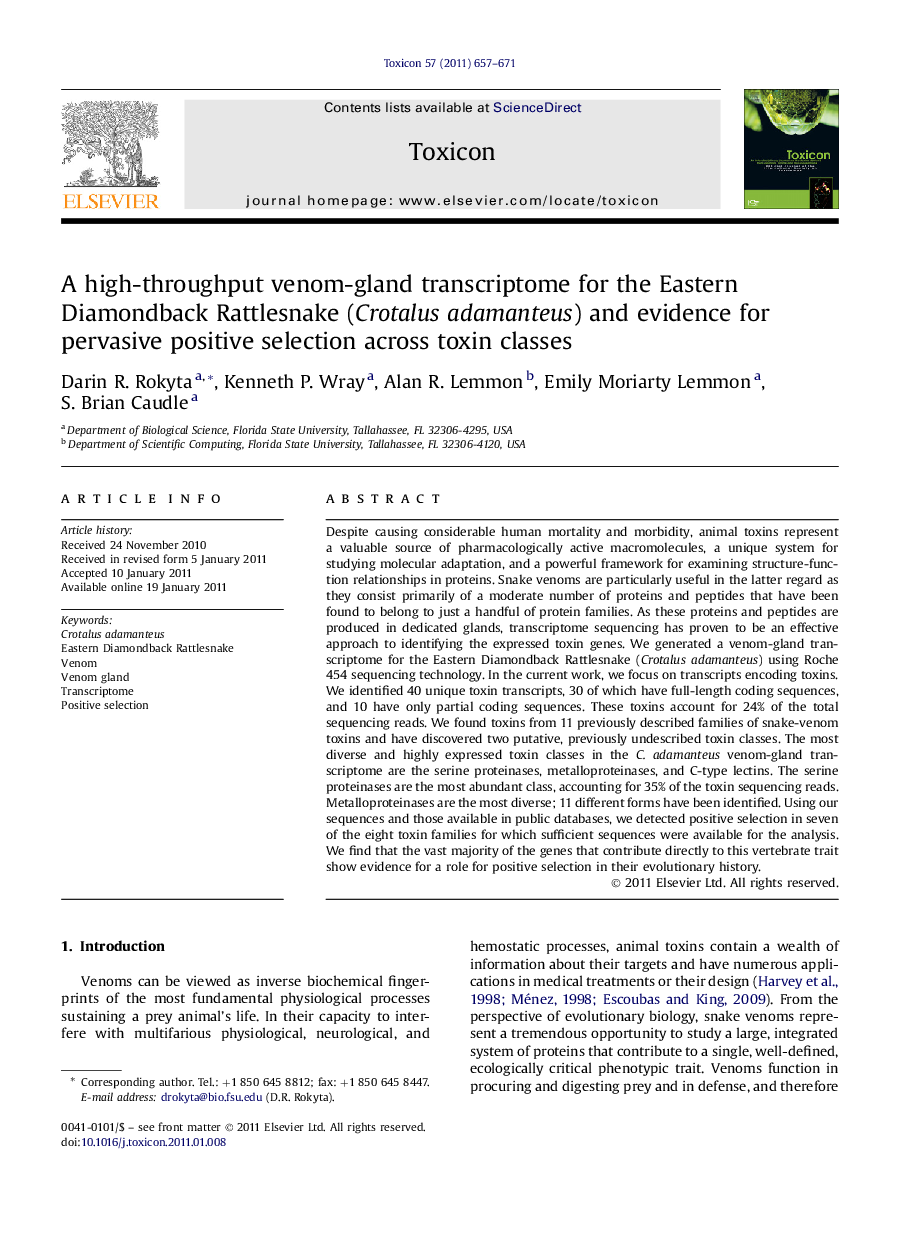| کد مقاله | کد نشریه | سال انتشار | مقاله انگلیسی | نسخه تمام متن |
|---|---|---|---|---|
| 10880776 | 1076997 | 2011 | 15 صفحه PDF | دانلود رایگان |
عنوان انگلیسی مقاله ISI
A high-throughput venom-gland transcriptome for the Eastern Diamondback Rattlesnake (Crotalus adamanteus) and evidence for pervasive positive selection across toxin classes
دانلود مقاله + سفارش ترجمه
دانلود مقاله ISI انگلیسی
رایگان برای ایرانیان
کلمات کلیدی
موضوعات مرتبط
علوم زیستی و بیوفناوری
بیوشیمی، ژنتیک و زیست شناسی مولکولی
بیوشیمی، ژنتیک و زیست شناسی مولکولی (عمومی)
پیش نمایش صفحه اول مقاله

چکیده انگلیسی
Despite causing considerable human mortality and morbidity, animal toxins represent a valuable source of pharmacologically active macromolecules, a unique system for studying molecular adaptation, and a powerful framework for examining structure-function relationships in proteins. Snake venoms are particularly useful in the latter regard as they consist primarily of a moderate number of proteins and peptides that have been found to belong to just a handful of protein families. As these proteins and peptides are produced in dedicated glands, transcriptome sequencing has proven to be an effective approach to identifying the expressed toxin genes. We generated a venom-gland transcriptome for the Eastern Diamondback Rattlesnake (Crotalus adamanteus) using Roche 454 sequencing technology. In the current work, we focus on transcripts encoding toxins. We identified 40 unique toxin transcripts, 30 of which have full-length coding sequences, and 10 have only partial coding sequences. These toxins account for 24% of the total sequencing reads. We found toxins from 11 previously described families of snake-venom toxins and have discovered two putative, previously undescribed toxin classes. The most diverse and highly expressed toxin classes in the C. adamanteus venom-gland transcriptome are the serine proteinases, metalloproteinases, and C-type lectins. The serine proteinases are the most abundant class, accounting for 35% of the toxin sequencing reads. Metalloproteinases are the most diverse; 11 different forms have been identified. Using our sequences and those available in public databases, we detected positive selection in seven of the eight toxin families for which sufficient sequences were available for the analysis. We find that the vast majority of the genes that contribute directly to this vertebrate trait show evidence for a role for positive selection in their evolutionary history.
ناشر
Database: Elsevier - ScienceDirect (ساینس دایرکت)
Journal: Toxicon - Volume 57, Issue 5, April 2011, Pages 657-671
Journal: Toxicon - Volume 57, Issue 5, April 2011, Pages 657-671
نویسندگان
Darin R. Rokyta, Kenneth P. Wray, Alan R. Lemmon, Emily Moriarty Lemmon, S. Brian Caudle,